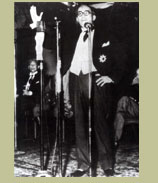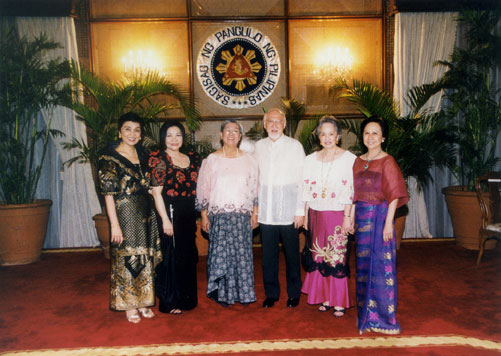 |
About the Author |
 |
 |

 |
Philippine National Artist for Literature Nick Joaquin is fictionist, poet
and journalist. He has also written histories and biographies: The Aquinos
of Tarlac (1983), Jaime Ongpin: The Enigma: The Profile of a Filipino as a
Manager, Mr. FEU: The Culture Hero that was Nicanor Reyes (1995) and
has translated from the original Spanish poems (1952) and plays of the
national hero Jose Rizal.
More than two dozen other books have been authored by Joaquin, among
them - Prose and Poems (1952), The Woman Who had Two Navels (1957)
La Naval de Manila and Other Essays (1964). A Question of Heroes (1977),
Caves and Shadows (1983), Almanac for Manileņos and The World of
Damian Domingo (1990). Probably the most famous Filipino play in the
English language is Joaquin's Portrait of the Artist as Filipino (1966).
In 1961, Joaquin was given the Republic Cultural Heritage Award for
Literature and in 1964, the Patnubay ng Sining at the Kalinangan Award.
He has been winner of the Carlos Palanca Literature Award and the Manila
Critics Circle Award. The honor of National Artist for Literature was conferred
on him in 1976. In 1996, he received the prestigious Ramon Magsaysay
Award for Lilterature. |
|
 |
 |
About the Publisher |
 |
 |
The Museo ng Malacaņang Foundation, Inc. was formed at the request of President Corazon C. Aquino in 1986. The Foundation's mission was the transformation of Malacaņang Palace from being not only the official residence of the Philippine Presidents and venue for Cabinet meeting and State ceremonies but also a vibrant historical museum accessible to all. From 1986 to 1992, the Palace was a setting for a working President as well as a popular destination for tourists to view the changing exhibitions and to take the tour, which the Foundation developed and conducted through its corps of trained docents.
To ensure the preservation of this unique symbol of Philippine cultural heritage,
the Foundation initiated and completed a detailed inventory of the entire
contents of the Palace proper under the supervision of a reputable accountancy
firm. It undertook the professional restoration and documentation of the
Malacaņang artworks and created a catalogue of books and printed material in
the Presidential Library of the Palace.
The publication of this maiden venture was initiated by the late Leandro V.
Locsin, National Artist for Architecture and member of the first Board of
Trustees, to tell the fascinating story of Malacaņang Palace, awaken national
pride in our historical monuments, and reinstill respect for the traditions
of the Philippine presidency. The Foundation, is now known as the Society
for the Preservation of Philippine Culture Inc. |

 |
|
 |
 |
About the Designer |
 |
 |



 |
Painter-writer-book designer, Alfredo Roces has authored and designed books on Philippine artists: Amorsolo (1975) Sanso (1977), Legazpi: The Making of a National Artist (1993), Felix Resurreccion Hidalgo and the Generation of 1872 (1998), The Filipino Nude (1975) and Looking for Liling (2000). He also has written numerous essays on Philippine folk art and culture. Roces was the prime mover and editor-in-chief of Filipino Heritage, the ten-volume study on Philippine culture and history published in 1978. Since then, Roces has made Sydney, Australia his home base where he served as editor of Geo, Australasia's Geographical Magazine. As free-lance artist-writer-book designer, Roces mounts regular one-man painting exhibits and sustains a prolific output as book author and designer.
Among his many awards are the Ten Outstanding Young Men (TOYM) in 1961, Journalist of the Year from the Citizens Council for Mass Media and is listed in the 10th edition of International Authors and Writers Who's Who published in Cambridge, England (1986). Roces has won several awards as an artist, including the Grand Prize (1972) and Artist of the Year award (1974) from the Art Association of the Philippines.

(L-R)Narzalina Lim, Phyllis Zaballero, Regina Sy Coseteng, Trustees of the Society for the Preservation of Philippine Culture pose with Alfredo Roces, editor of the book, his wife Irene and Sylvia Montilla
|
|
|
 |
 |
|
